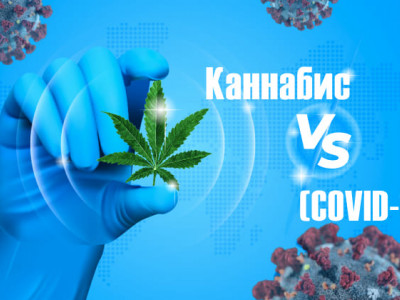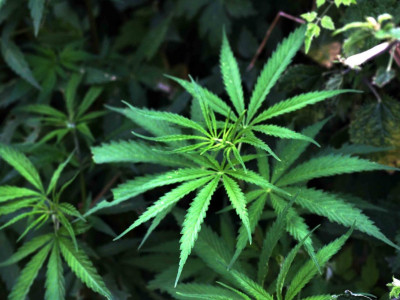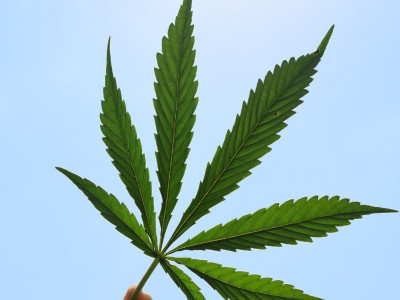0.00 грн.
CheckoutHow marijuana affects the brain - harm and benefit
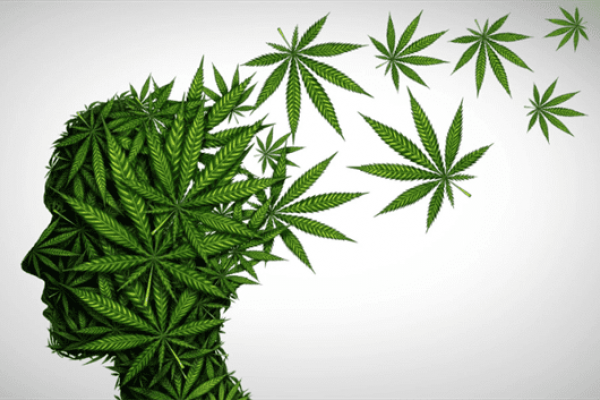
The emergence of a mass movement for the legalization of cannabis in the world has led to the fact that many scientists and doctors began to study the properties of this plant. Previously, it was generally accepted that marijuana use negatively affects intelligence, leads to nervous system disorders and harms mental health. At the same time, supporters of the legalization movement put forward arguments that cast doubt on whether cannabis is so harmful.
There are quite a large number of people who have personally experienced the benefits of this plant. In addition, marijuana has been shown to help cope with severe negative symptoms of cancer. At the same time, research continues. But in general, we can say that the effect of cannabis is ambiguous and strictly individual, at the same time there is no need to outright prohibit it.
Please note that we do not encourage self-medication, use of marijuana, or cultivation of it. The presented article was created for informational purposes for persons over 18 years of age.
Does marijuana affect the human brain
Marijuana is a product extracted from the leaves and inflorescences of cannabis. For a long time it has been used for treatment in Asia, Africa, and Latin America. The medical community became interested in the plant relatively recently; at the moment, this is far from being a topic for which research can be obtained with a large grant. Sponsors want clear, unambiguous data, and marijuana has never been known for its predictability. While some feel a surge of vivacity and positive mood from it, others may plunge into a pool of calm. In addition, the effect differs depending on the period of life when cannabis was used by the same person.
Marijuana and its influence on the psyche in the form of various effects are associated with its composition. It contains:
- stimulants;
- relaxants.
The concentration of these substances differs depending on the specific variety. The benefits and harms to the human brain from taking marijuana depend on the dose of relaxants and stimulants in a specific dose of a particular plant. It also depends on the initial state of health and individual characteristics.
Currently, 113 cannabinoids have been found in the plant. THC comes first - it is one of the neurostimulants that causes a feeling of euphoria. In medical practice, small doses of this substance made it possible to alleviate the condition of:
- obsessive state;
- anxiety disorder;
- depression.
At the same time, there is still little information from research for marijuana-based products to be included in the list of those recommended by WHO.
In 2016, researchers from the Salk Institute provided research evidence that THC may have neuroprotective effects. Scientists conducted a series of tests using cell cultures and found that THC prevents the accumulation of abnormal protein beta-amyloid in cells. It is this protein that provokes Alzheimer's. THC helps slow down the pathological process and protects neurons. Also among the properties of this substance is that it can suppress the progression of Parkinson’s and Huntington’s, which also develop as a result of the accumulation of abnormal proteins in nerve tissues.
At the same time, it is worth noting that there is no need to equate laboratory studies and the effect on the human body. At the same time, the work carried out deserves attention, since forecasts regarding the development of Alzheimer’s in people are far from rosy – by 2050 it is expected that the number of cases will increase 4 times.
In addition to THC, marijuana also contains another important component - CBD (cannabidiol). Its main property is that it helps to relax, but does not directly affect the body. In addition, it has great therapeutic potential.
During the production of medical marijuana, varietal cannabis is used, which contains a high concentration of CBD. It has a number of effects:
- anti-inflammatory;
- anticonvulsant;
- spasmolytic.
At the moment, only 2 indications are approved for the use of medical cannabis - suppression of chronic pain and nausea during chemotherapy and antiretroviral therapy (HIV-infected). It is now quite early to say that marijuana will be introduced into clinical practice. Doctors will have to collect a lot of indisputable evidence about the medicinal properties of weed. The ones we have now are not enough.

The effect of marijuana on the brain: what the gifts of Jah provide
The benefits of marijuana on the brain are directly related to the fact that it can have an effect on the nervous system. It is worth noting that cannabis does not suppress cognitive function or harm memory. The benefits of the presented plant are due at least to the fact that the human body is independently capable of producing a substance that is similar to cannabino ides.
In the late 90s, it was discovered that the human body has its own analogues of THC called anandamide and 2-arachidonoglycerol (2-AG). Their receptors are located in different parts of the body, but most of them are in the brain. Where there are the most receptors, its own cannabinoid system is formed. Its main function is that it helps prevent overexcitation of the nervous system.
It is worth noting that taking a small dose of THC can increase the activity of the hippocampus, as well as the prefrontal cortex - these areas are involved in processing our impressions and emotions. At the same time, if you take too much of this substance, the opposite effect is observed - emotions and impressions begin to be suppressed. Also, the properties of this substance include the fact that it can influence the amygdala, an area of the brain on which stress and fears depend. That is why consuming marijuana in small quantities provides the following effects:
- relaxation;
- reducing anxiety;
- getting rid of unpleasant memories that are associated with fear and pain;
- improved sleep;
- activation of recovery after emotional and physical overload.
The properties of THC include the fact that the substance can accumulate in the body and is eliminated within a couple of weeks after the last use of marijuana. Therefore, if you use cannabis regularly, you will not be able to suppress anxiety. Everything starts to happen the other way around - uncontrollable fears appear, anxiety and restlessness increase, and attacks of paranoia may even appear.
The effect of marijuana on memory continues to be studied. It is worth noting that often after an active canna party, many notice a deterioration in concentration and memory. This is due to the same effect of cannabis on the hippocampus. This area of the brain is a kind of clipboard that converts short-term memory into long-term memory. But if you add THC, this conversion system can go to hell.
Also, using marijuana in large quantities can lead to the fact that all a person’s thoughts and aspirations can be focused exclusively on one thing. In addition, problems with coordination may occur, and movement inhibition may appear. Also, the effect of THC causes the sense of time to change and become slower. For example, after using it, a person ceases to realize that he has been talking about something for an entire hour.
Problems with concentration while smoking marijuana appear in the form of a chaotic stream of thoughts, associative series, and images. In any case, as the active substances are eliminated from the human body, cognitive abilities are restored.
Please note that there is currently no conclusive evidence that smoking weed can cause psychosis, but there have been cases where psychotic symptoms have been exacerbated by cannabis use in people diagnosed with or susceptible to schizophrenia psyche. In addition, there is no official confirmation that marijuana can stimulate a person to switch to harder drugs. In states where cannabis has acquired legal status, there has not been a rapid increase in the number of drug addicts. At the same time, a slightly different trend was noticed - they began to buy alcohol less actively.
If you can balance the concentration and ratio of CBD to THC, you will be able to achieve the following effect:
- anticonvulsant;
- painkiller;
- antispastic.
The concentration of the active substances presented depends on the specific variety. Sativa-based strains with a high percentage of THC are milder stimulants.
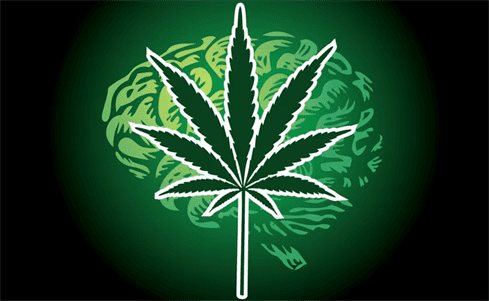
Medical cannabis: for what diseases is it prescribed
In states where medical marijuana has been legalized, most often those patients who are diagnosed with the main symptoms of chemotherapy for oncology end up in dispensaries:
- severe exhaustion of the body;
- chronic pain;
- nausea and vomiting.
Oncologists were the first to notice the fact that smoking marijuana allows you to suppress conditioned reflexes associated with nausea and pain. Harvard University conducted its own study, which found that over 40% of US oncologists, before the legalization of cannabis, privately recommended that their patients smoke a joint to relieve pain, suppress nausea, and improve morale.
Marijuana's ability to relieve pain and suppress nausea was proven in the late 70s, when the National Cancer Institute published its research. According to their results, 94% of patients showed a decrease in nausea and vomiting after chemotherapy when taking high doses of cannabis. Among those who used cannabis moderately, this indicator b is almost 80%. Medical marijuana is also indicated for people with HIV who experience nausea and loss of appetite while on ART.
In addition, there is a hypothesis that marijuana has an anti-cancer effect. The University of Rostock said that cannabis can slow the growth of malignant tumors of the brain, lungs and breast, while leaving healthy tissue unharmed. The anticancer effect is expressed in several forms:
- preventing the division of pathological cells;
- preventing the growth of blood vessels into the tumor, thereby preventing the tumor from feeding.
It is also important that cannabis is often used as a treatment for migraines. The presented disease is characterized by severe throbbing pain in the head, and it occurs in combination with constant vomiting. A migraine attack can last up to 72 hours, and afterwards the person feels exhausted. It is worth noting that migraine does not pose a direct threat to life, but at the same time, such attacks can undermine health.
Research was conducted at the University of Colorado, during which it was found that cannabis can restore the performance of patients with migraines and that medical marijuana can reduce the frequency of migraine attacks by 2 times, while patients stop complaining of nausea.
Medical marijuana helps quite well in the treatment of epilepsy and other diseases characterized by seizures. Independent studies have been conducted on this topic, which have proven that the frequency of seizures decreases, and the number of lesions in the brain is also reduced.
But the benefits of using marijuana for the body do not end there. Medical varieties can improve not only physical condition, but they also help quite well in psychotherapy and psychiatry. As described above, one of the main effects of this plant is that after its use, negative emotions and traumatic experiences are suppressed. This effect is that the active substances allow you to block the neural pathways used by the limbic system to send its impulses to the brain. Quite often, medical marijuana is prescribed to people suffering from PTSD. The University of British Columbia conducted a study on this topic. In this situation, 24 people with PTSD experienced the positive effects of medical marijuana. During the study, patients smoked weed and, as a result, it turned out that the risk of depression was reduced by 7 times, and suicidal tendencies appeared 4 times less.
Benefits and harms of marijuana on the brain: what its use gives
Like any other medicine, marijuana cannot help everyone. If you use cannabis for too long, you may experience side effects in the form of:
- memory impairment;
- decreased motivation;
- deterioration in concentration;
- slowness of reactions;
- suppression of emotions.
In addition, a real concern among doctors is the fact that marijuana can reduce blood flow to the brain in the hippocampus area - this can often be noticed in those who smoke weed regularly. It is the deterioration of blood supply that can lead to the appearance of vascular dementia in older people. This fact reduces to almost zero the positive effect of cannabis in the early stages of Alzheimer's and Parkinson's.
If you smoke a rolled-up cigarette in the evenings before going to bed, it is also not very beneficial for the nervous system. Of course, a high concentration of CBD in hemp will help you fall asleep, but its quality is a big question. The fact is that marijuana can increase the duration of the slow-wave delta sleep phase (at this moment the body is as relaxed as possible), but at the same time, it decreases the duration of rapid deep sleep, which is necessary for optimal brain function and the body’s production of serotonin (also often called the hormone happiness). It is also during this phase that our brain converts our day's impressions into long-term memory. As a result, frequent weed smoking can lead to cognitive problems or even depression due to a lack of serotonin in the body.
The effectiveness of cannabis also depends on how you use it. To reduce pain or suppress nausea, it is best to inhale marijuana vapors. In this situation, cannabinoids will enter the lungs and from there directly into the bloodstream.
Experts recommend using medical marijuana in the form of evaporated dry concentrates and mixtures. This is done with the help of vaporizers. In this situation, the active substances in cannabis evaporate at low temperatures. As a result, toxic combustion products will not enter the body. You can also consume hemp with food. If the active components are absorbed through the gastrointestinal tract, then in this situation it will be It is possible to achieve a longer and more persistent effect. But you definitely need to take a competent approach to calculating the dose.
In any case, before using medical marijuana for treatment, you should definitely be examined and consult with a qualified doctor. Only a doctor will be able to assess the potential benefits and harms of taking this drug and draw up a canna therapy regimen.
Conclusion
Summarizing all of the above, we can conclude that cannabis has great therapeutic potential, which is definitely worth exploring. A plant with numerous medicinal effects should not be ignored by the scientific community due to prejudice. In addition, real, verified and proven information about the effect of medical marijuana will make it possible to cut off the oxygen to charlatans and others who want to profit from the misfortune of another person. Medicine must move forward and explore new possibilities.
